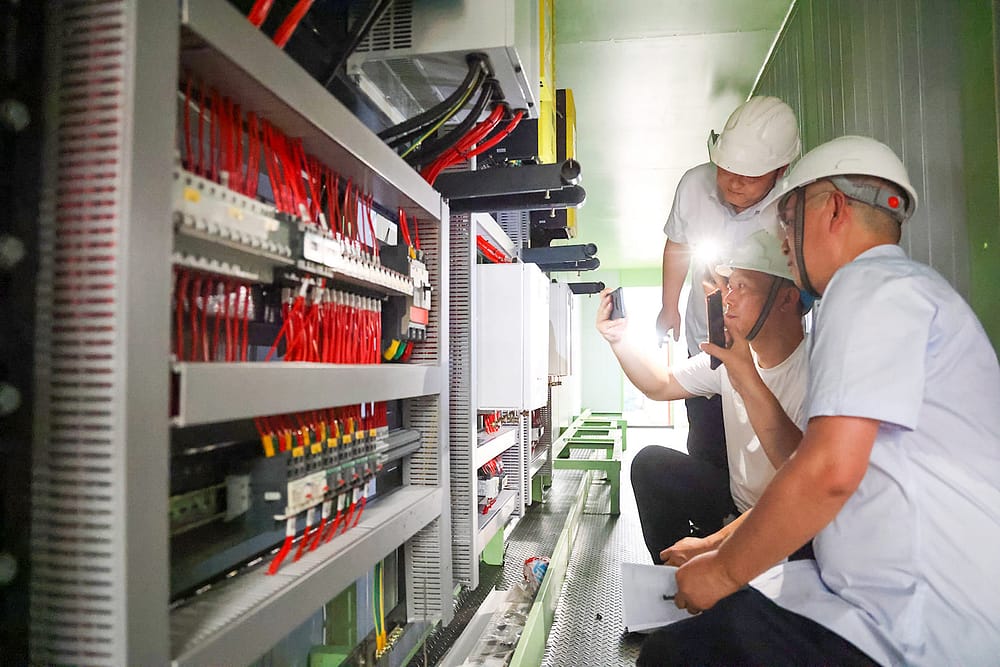Expert electrical system troubleshooting support for improved performance.
Expert electrical system troubleshooting support for improved performance.
Blog Article
Top Tips for Effective Electric System Troubleshooting
Repairing electric systems calls for a systematic technique, based in an extensive understanding of electric principles and security methods. By familiarizing oneself with circuit elements, making use of necessary tools, and adhering to a structured analysis method, professionals can efficiently recognize and solve issues. The subtleties of effective troubleshooting expand past mere technical knowledge; comprehending exactly how to document searchings for and prioritize safety can substantially affect outcomes. As we explore these vital components better, it becomes clear that understanding this process is not simply helpful but vital for success in the area.
Understand the Essentials
Comprehending the essentials of electrical systems is necessary for reliable troubleshooting, as a strong structure allows professionals to diagnose and deal with concerns a lot more efficiently. An extensive grasp of electrical concepts, such as voltage, existing, resistance, and power, is essential in recognizing the root creates of problems. Voltage is the electric potential difference that drives present with a circuit, while resistance opposes the flow of present, affecting the general capability of the system.
Knowledge with circuit parts, consisting of resistors, capacitors, diodes, and changes, is likewise paramount. Each element plays a distinctive function in circuit habits and can affect performance when malfunctioning. Furthermore, understanding series and identical circuit setups is essential, as these plans affect the circulation of voltage and current within the system.
Moreover, knowledge of safety methods is important. Specialists have to be aware of prospective dangers, such as shock and brief circuits, to apply risk-free troubleshooting methods. By understanding these foundational concepts, technicians boost their capacity to perform effective diagnostics and fixings, ultimately causing boosted efficiency and integrity of electrical systems. This foundational understanding is the foundation of effective troubleshooting endeavors.
Gather Necessary Tools
Reliable troubleshooting of electrical systems needs the appropriate set of devices to diagnose and deal with concerns properly. Necessary tools consist of a multimeter, which determines voltage, existing, and resistance, enabling for specific assessments of electric components.
Furthermore, insulated hand tools such as screwdrivers, pliers, and cord strippers are important for securely controling electric links. It is additionally advisable to have a circuit tester handy to confirm the visibility of voltage in electrical outlets and cables. For more facility systems, a thermal imaging cam can help spot overheating elements, showing possible failings.

Adhere To an Organized Approach
Having gathered the proper tools, the following action in repairing electrical systems is to adhere to a methodical approach. A systematic method ensures that professionals can identify faults successfully and accurately, decreasing downtime and protecting against unnecessary fixings.
Begin by evaluating the system's schematic diagrams and requirements. This involves checking each component methodically, starting from the power source and functioning in the direction of the load.
Utilize screening devices, such as multimeters and oscilloscopes, to collect objective information regarding voltage, existing, and resistance at different points within the system. This empirical evidence will lead your troubleshooting initiatives and help to validate or get rid of potential dig this reasons for failure.
Additionally, think about environmental aspects that might influence the system's efficiency, such as temperature level changes or dampness ingress. A detailed assessment of circuitry, connections, and components will guarantee that all opportunities are represented.
File Your Searchings For
Complete documents is important in the repairing process of electric systems. This technique not just aids in comprehending the origin reason of the issue but also serves as a reference for future troubleshooting initiatives.

Furthermore, preserving a log of parts changed or repair work done is invaluable. This details supports inventory monitoring and can aid assess the durability and integrity of certain elements.
Eventually, the paperwork procedure should be thorough yet succinct, making it possible for easy access and review - electrical system troubleshooting. By prioritizing thorough documentation, specialists can develop a valuable understanding base that not only aids in present troubleshooting however additionally empowers future upkeep efforts, consequently improving general system integrity

Prioritize Security Measures
Acknowledging the inherent risks connected with electrical systems is important for guaranteeing safety during troubleshooting. Electric shock, burns, Read Full Article and equipment damages are just a few of the potential hazards that service technicians encounter. Focusing on precaution is not just a lawful commitment however additionally a moral critical that safeguards both the professional and the surrounding setting.
Before starting any troubleshooting job, professionals must put on suitable personal protective equipment (PPE), consisting of protected gloves, shatterproof glass, and flame-resistant clothing. Ensuring that the workplace is completely dry and totally free of clutter can substantially decrease the threat of crashes. In addition, it is necessary to de-energize circuits before beginning any job, verifying that they are not endure the use of a multimeter or voltage tester.
Developing clear communication procedures with employee is also essential; this makes sure that everybody recognizes potential dangers and the status of the electric system being functioned on. Lastly, having an emergency situation response strategy in position can confirm invaluable in case look at here of an event. By prioritizing precaution, service technicians can effectively alleviate threats and promote a much safer workplace.
Final Thought
Effective electric system troubleshooting counts on a comprehensive understanding of basic principles and a systematic strategy. Focusing on safety and security steps makes certain the health of individuals included and the integrity of the electric system.
Report this page